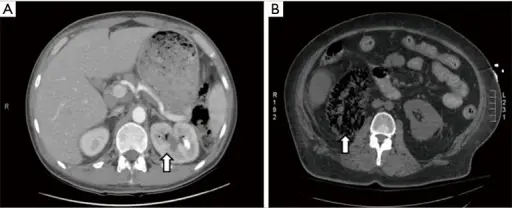Urolithiasis is the formation of the renal calculi, kidney stones in the kidney but may also arise at any level of the urinary collecting system.
What is the Pathology of Urolithiasis?
The pathology of urolithiasis is:
-Etiology: The cause of urolithiasis is unknown.
-Genes involved: Unknown.
-Pathogenesis: The sequence of events that lead to urolithiasis is obscure. The probable involvement are the predisposing conditions, including the concentration of the solute, variations in urine pH, and bacterial infections.
-Morphology: The morphology associated with urolithiasis shows small and smooth or jagged stone, and staghorn calculi.
-Histology: Not applicable.
How does Urolithiasis Present?
Patients with urolithiasis are typically common in males present at the age range of 70 years. The symptoms, features, and clinical findings associated with urolithiasis include asymptomatic, ureteral colic, urine obstruction, hematuria, and UTI.
How is Urolithiasis Diagnosed?
Urolithiasis is diagnosed radiologically.
How is Urolithiasis Treated?
Urolithiasis is treated by medical care such as alkalinizing agents and diuretics. Surgical interventions, and dietary measures.
What is the Prognosis of Urolithiasis?
The prognosis of urolithiasis is good, with prompt diagnosis and treatment.



